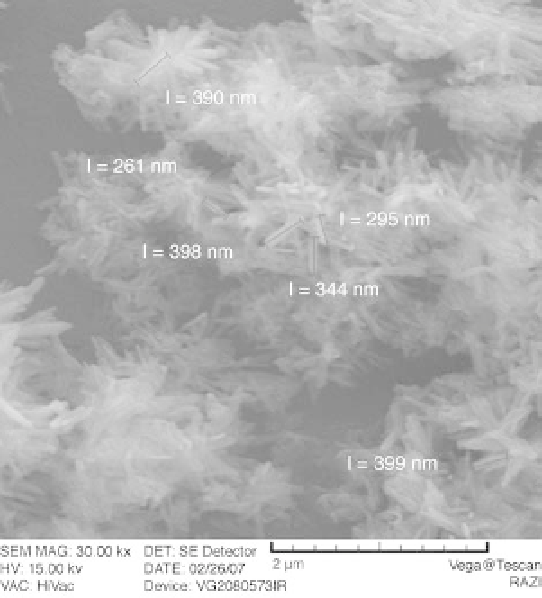Biomedical Engineering Reference
In-Depth Information
17.1 SEM micrograph of synthetic nHA rods. Reprinted with
permission from Elsevier (Nejati et al., 2008).
of the nHA on the development of the pore morphology as compared with
that of neat PLLA. The pore size of neat PLLA and nanocomposite
scaffolds is in the range of 175 and 97
m, respectively. In the case of the
microcomposite scaffold (Fig. 17.2(g) and (h)), micro-HA (mHA) particles
are randomly distributed in a PLLA matrix. Some are embedded in the pore
wall and some are piled together between or within the pores. Among the
composite and neat PLLA scaffolds, nanocomposites scaffolds showed the
highest compressive strength (8.67MPa) with 85.1% porosity, comparable
to the high end of compressive strength of cancellous bone (2-10MPa)
(Ramay Hassna and Zhang, 2004).
PCL/nHA nanocomposites that combine the osteoconductivity and
biocompatibility shown by HA ceramic with PCL properties have also
been prepared (Bianco et al., 2009; Rezwan et al., 2006; Hong et al., 2005;
Wei and Ma, 2004). The structural characterization of a novel electrospun
nanocomposite and the analysis of cell response by a highly sensitive cell
(embryonic stem cell for PCL/Ca-deficient nHA system) were investigated
by Bianco et al. (2009). For higher Ca-deficient nHA contents (
μ
55 wt%),
the mechanical properties significantly decreased, as did the onset
decomposition temperature and crystallinity.
~

